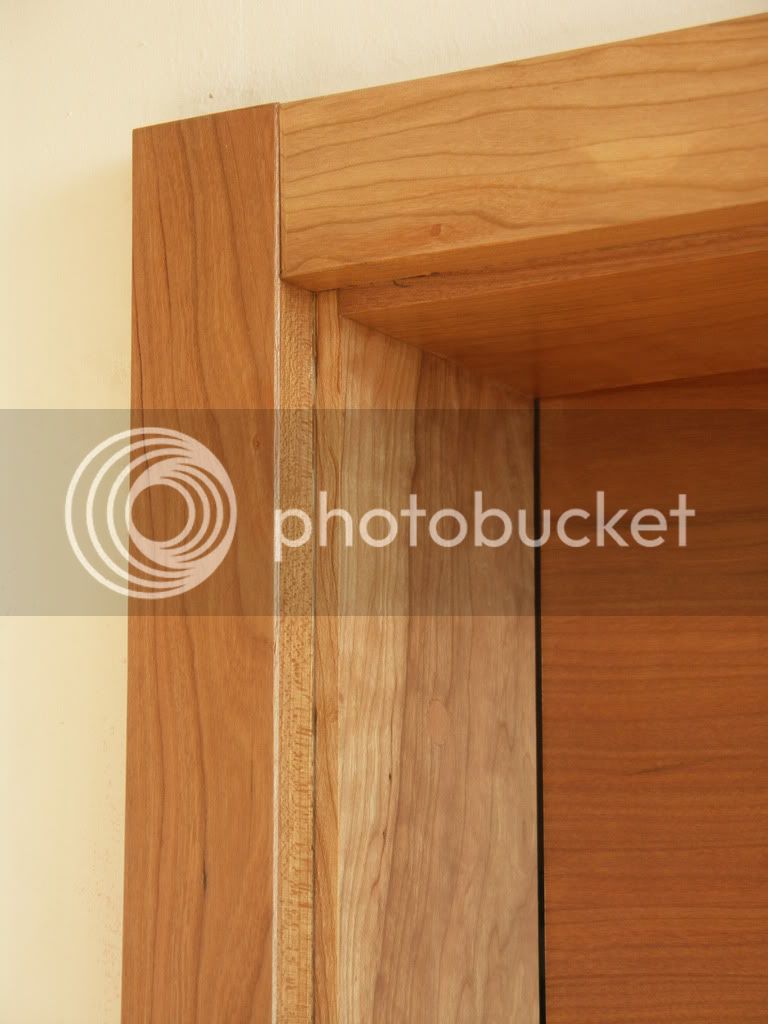I am trying to get a quote for some cherry from my local supplier, he mentioned it would/might contain sap(wood) and I said that was fine (not really know what he was on about and not wanting to sound stupid)
Can someone explain why he would mention it? and should I care?
The North American grading system is significantly different to British custom and practice and it frequently catches British buyers out because they don't understand the system. It is in fact very logical once you've mastered it. I don't expect everyone will get the full gist from the following abridged extract from a manuscript I've created on the topic. However, you have to bear in mind that sapwood is
not a fault; it's a natural part of a tree's structure. Sapwood may be desirable or undesirable and it depends on the species and the end use. In the American visual grading system the rules for heartwood and sapwood varies from species to species. Sapwood in cherry is considered undesirable as it detracts from the brown heartwood most buyers seek, whereas in ash and maple it’s considered desirable as it’s white. Slainte.
*******************************************************************************
"The North Americans have a well structured system of grading their timber for aesthetic qualities prior to its saleThe National Hardwood Lumber Association (NHLA) oversees the system. The grading system developed in the latter part of the 19th century and uses feet and inches as the measurement units. The grading method is perfectly suited to the Imperial system it sprang from.
First and Seconds Grade (FAS)
These are the best grades that provide long clear cuts out of a plank. Initial assessment of both sides of the board determine which is the best side and then the grading is allocated by reading the poorest side. The board must yield at least 83-1/3% (10/12’ths) of clear pieces as determined by assessing the worst side. The better side therefore yields even more clear cuts. Importantly, the inferior side must meet the FAS grade. The width and length of cuttings that the board can yield varies according to species, but the minimum board size to go into this grade is 8’ long by 6” wide. Clear cuts achievable from a board of this size, or longer and wider must yield pieces that are at minimum 7’ long by 3” wide, or 5’ long by 4” wide.
FAS One Face Grade (F1F)
Just below the FAS grade is F1F where the best face must meet FAS rules, ie, cutting sizes of 3” X 7’ or 4” X 5’, but the worst face meets the criteria for Number 1 Common grade, or better.
10.4.3 F1F Grade in Cherry and Walnut
As just described, judgement of the F1F grade comes from reading the best face therefore only one face must to show enough defect free wood to make the grade. It’s possible for the worst face to be virtually all sapwood but the board will still make the grade. Therefore, buyer beware. It's imperative you understand this when you're buying both cherry and walnut to avoid unrealistic expectations and disappointment.
Also be aware that both walnut and cherry will sometimes come in narrower boards than you'd normally expect for the F1F grade, with 4" wide boards permitted in some cases. This is due to the pressure on supply where large trees aren't so readily available; excluding much sought after colourful timbers like cherry and walnut would mean these narrower boards might not be used at all to make up long and wide panels, but would go into a lower grade most frequently used for smaller parts, eg, door frames, table rails, and so on. Large scale manufacturers in North America, and elsewhere, commonly make up wide panels from narrow stock anyway. They even take clear wide boards, rip them into standard widths of, say, 2” (50 mm) flip and rearrange the rippings created and rejoin them into the requisite panel widths for table tops, cabinet panels, etc."







































